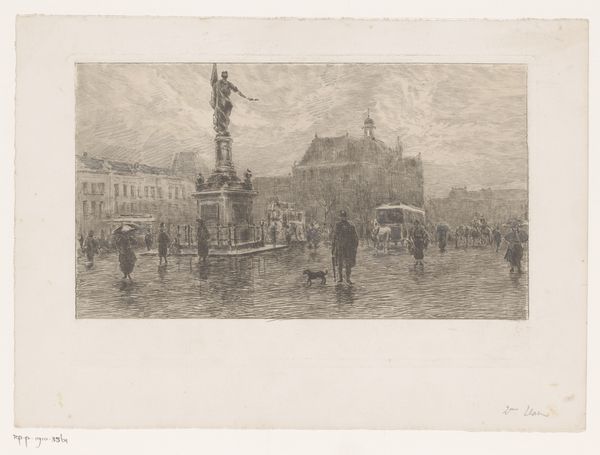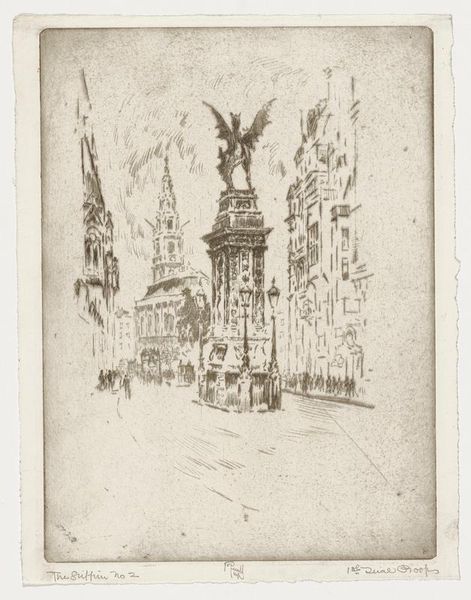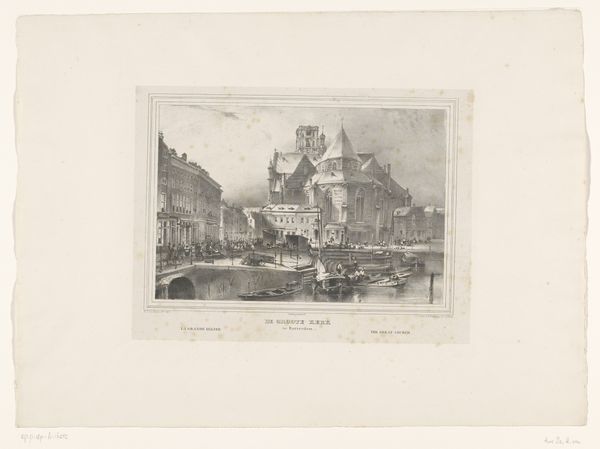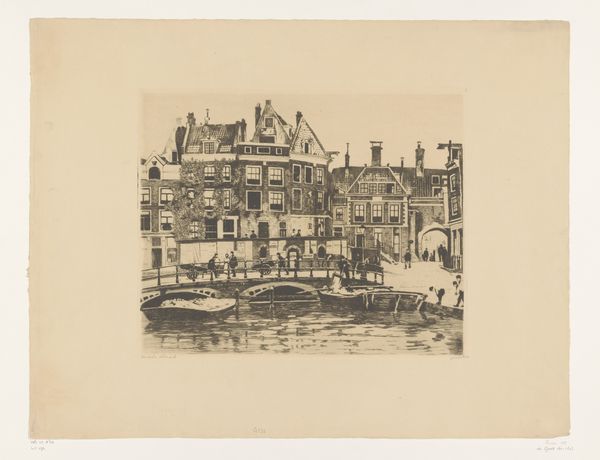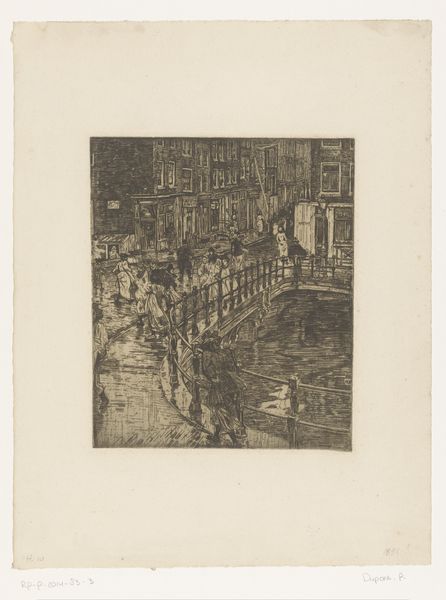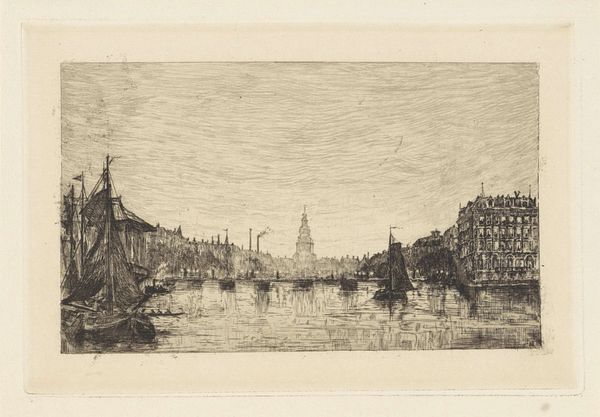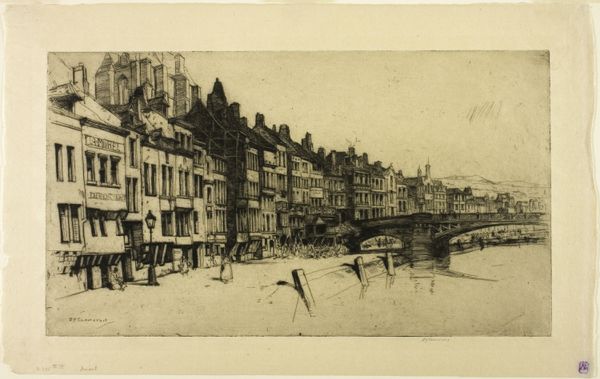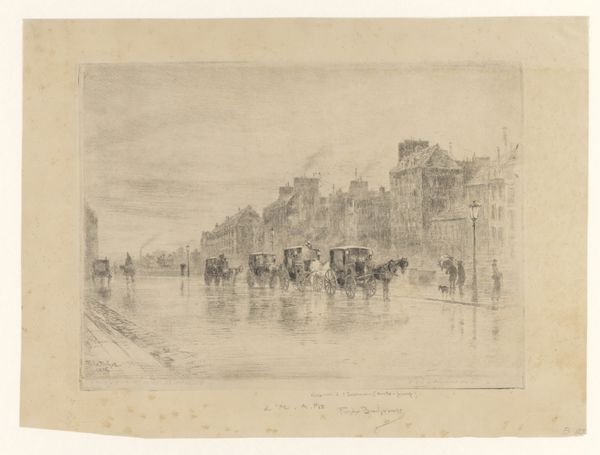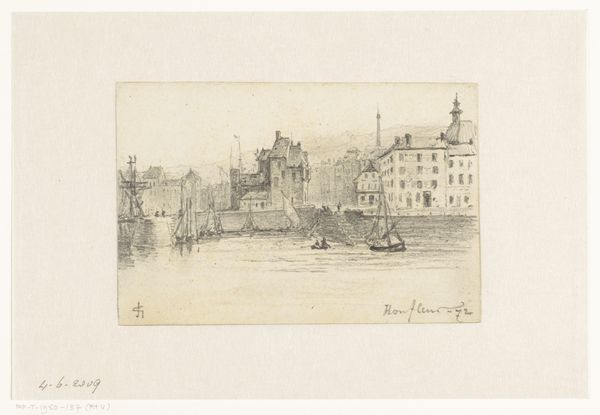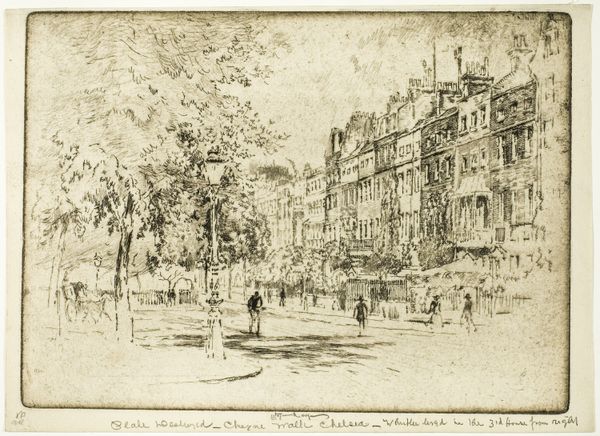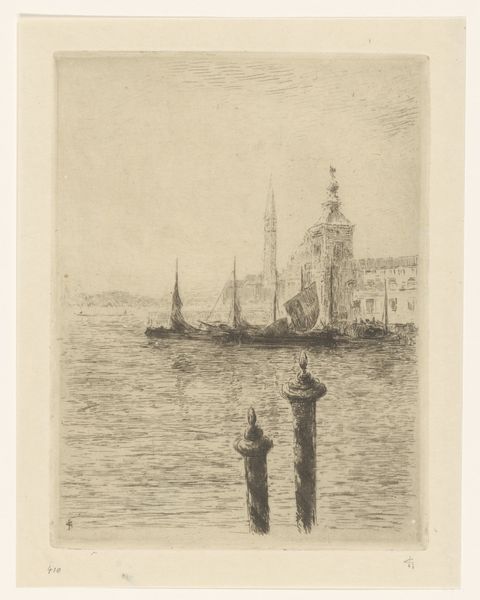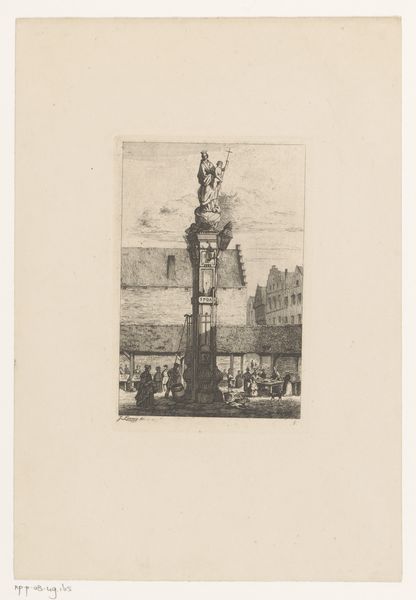
print, etching
#
statue
#
aged paper
#
16_19th-century
# print
#
etching
#
pencil sketch
#
cityscape
#
realism
Dimensions: height 171 mm, width 258 mm
Copyright: Rijks Museum: Open Domain
Jules Guiette made this etching, "Gezicht op de Place de la Commune in Antwerpen," capturing a slice of urban life in Antwerp. An etching is a printmaking process that uses acid to cut into a metal plate, usually copper or zinc, to create a design. The plate is covered with a waxy, acid-resistant substance, and then the artist scratches the design into this coating, exposing the metal underneath. When the plate is dipped in acid, the exposed lines are eaten away, creating grooves. These grooves hold ink, which is then transferred to paper to create the print. Look at how Guiette used the etching technique to bring the scene to life. Notice how the fine lines create a sense of depth and texture, capturing the bustling atmosphere. The way the acid bites into the metal gives the print a unique quality, a kind of gritty realism. Think about the labor involved in creating such a detailed image, from preparing the plate to carefully applying the acid and finally pulling the print. This artwork reminds us that printmaking, like many crafts, bridges the gap between art and industry, demanding both artistic skill and technical know-how.
Comments
No comments
Be the first to comment and join the conversation on the ultimate creative platform.
